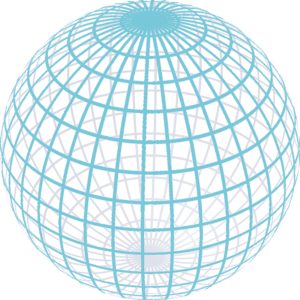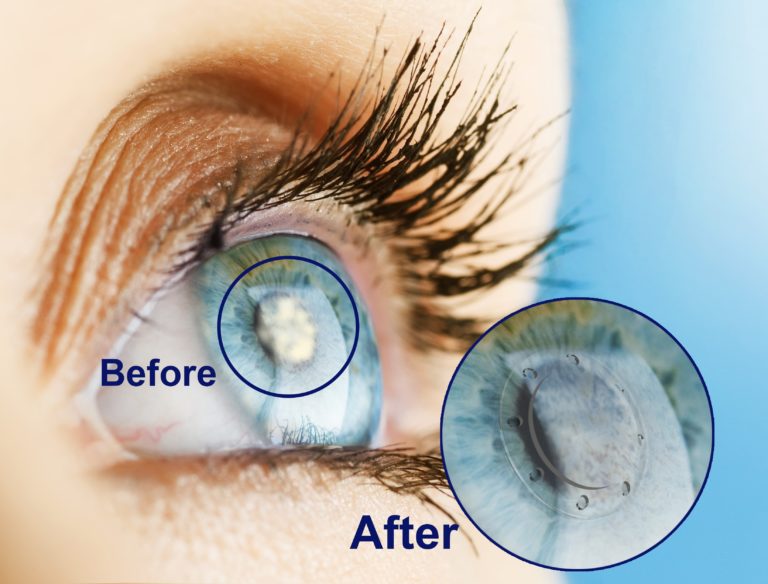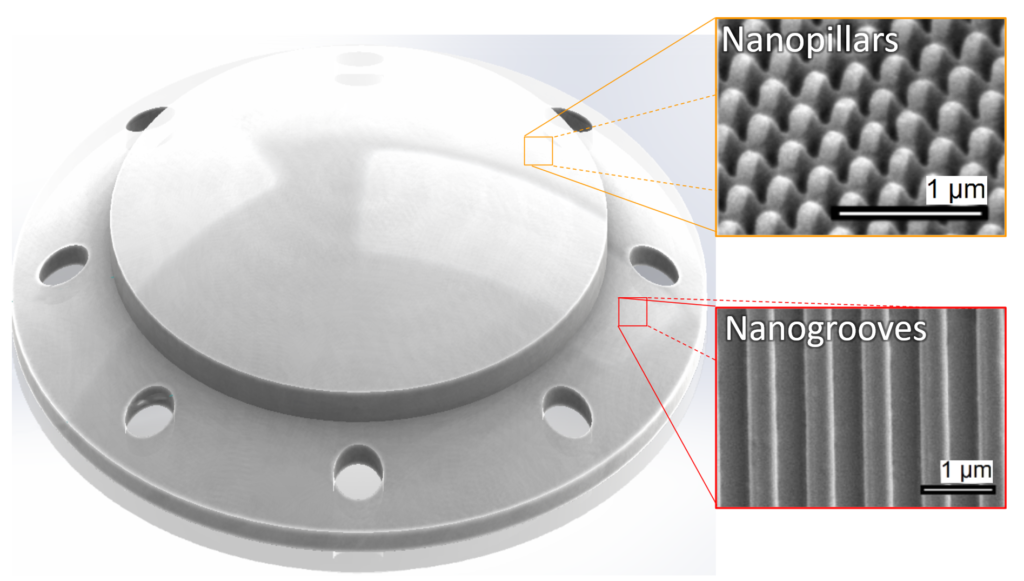Nano-Grooves
Nano-grooves are the lined patterns located on the outer ring of the cornea device. This structure promotes cell growth by allowing tissue to attach and align with the surface of the device. Both adhesion and alignment ensure that our device will not be rejected by the patient.
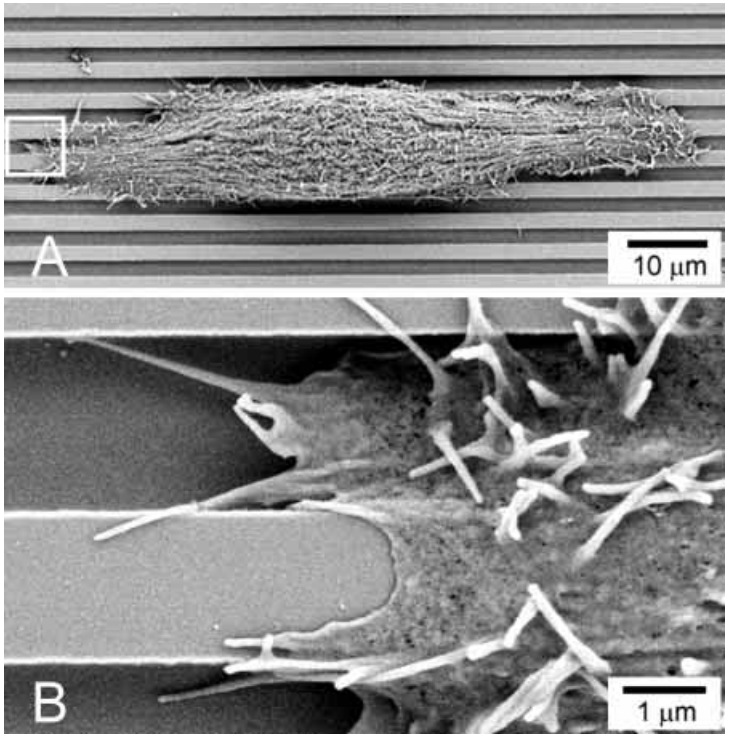
[Dickson, Mary, et al.]
Nano-Pillars
The nano-pillars behave like spikes and rupture bacteria upon impact. This prevents bio-film and cells from covering the top surface of our device. The pattern are inspired by cicada wing’s nano-pillars. We have shown that the physical topography creates antibacterial surfaces.
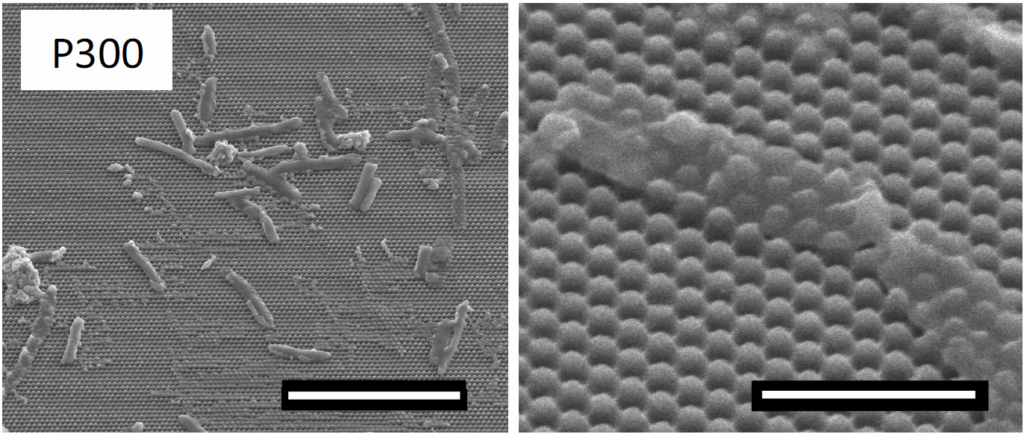
[Dickson, Mary, et al.]
Play Video
[“Cicada Wings Shred Bacteria to Pieces.” YouTube, NatureNewsteam, 4 Mar. 2013, www.youtube.com/watch?v=eIwj_ThMf4Q.]

